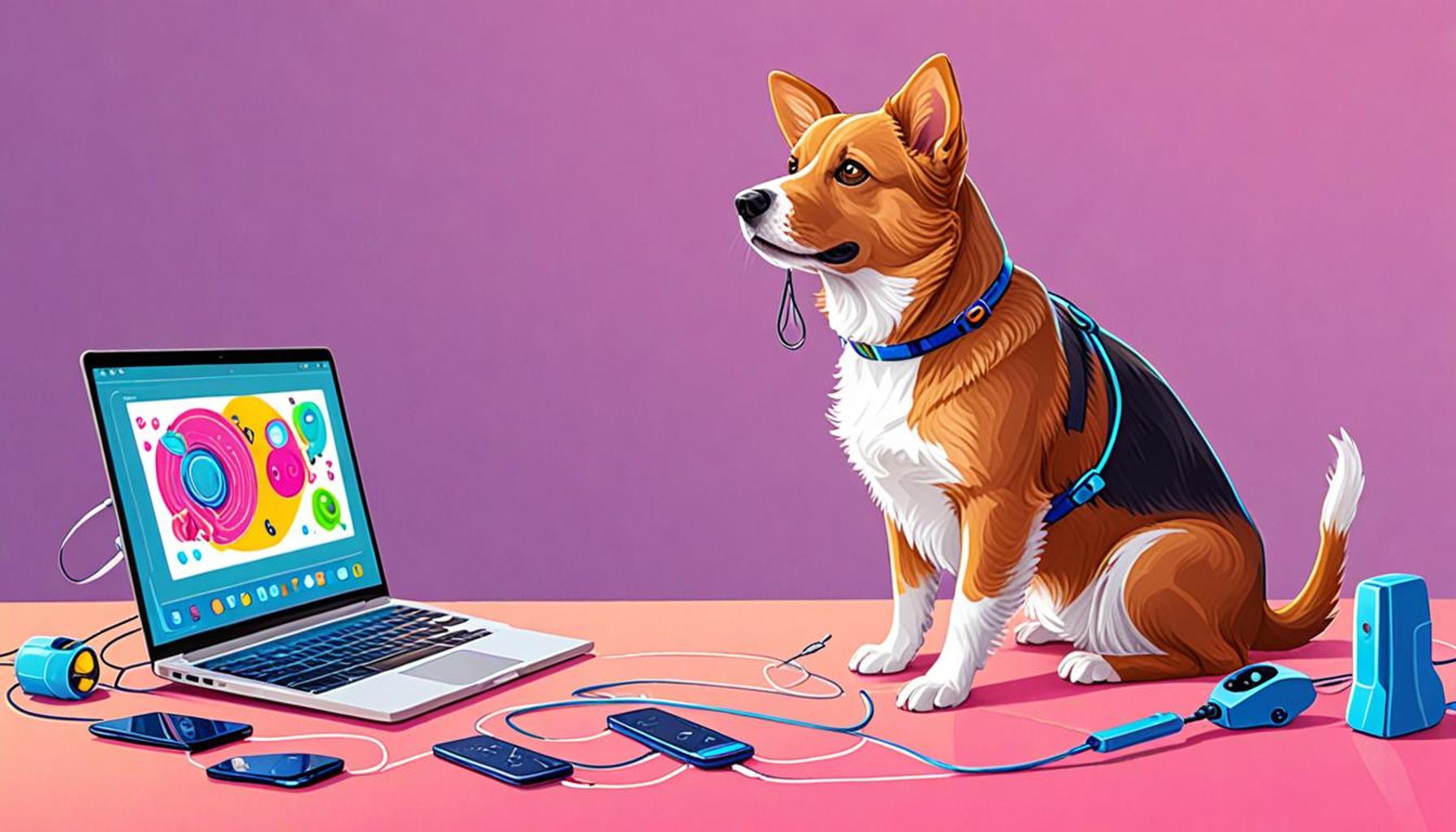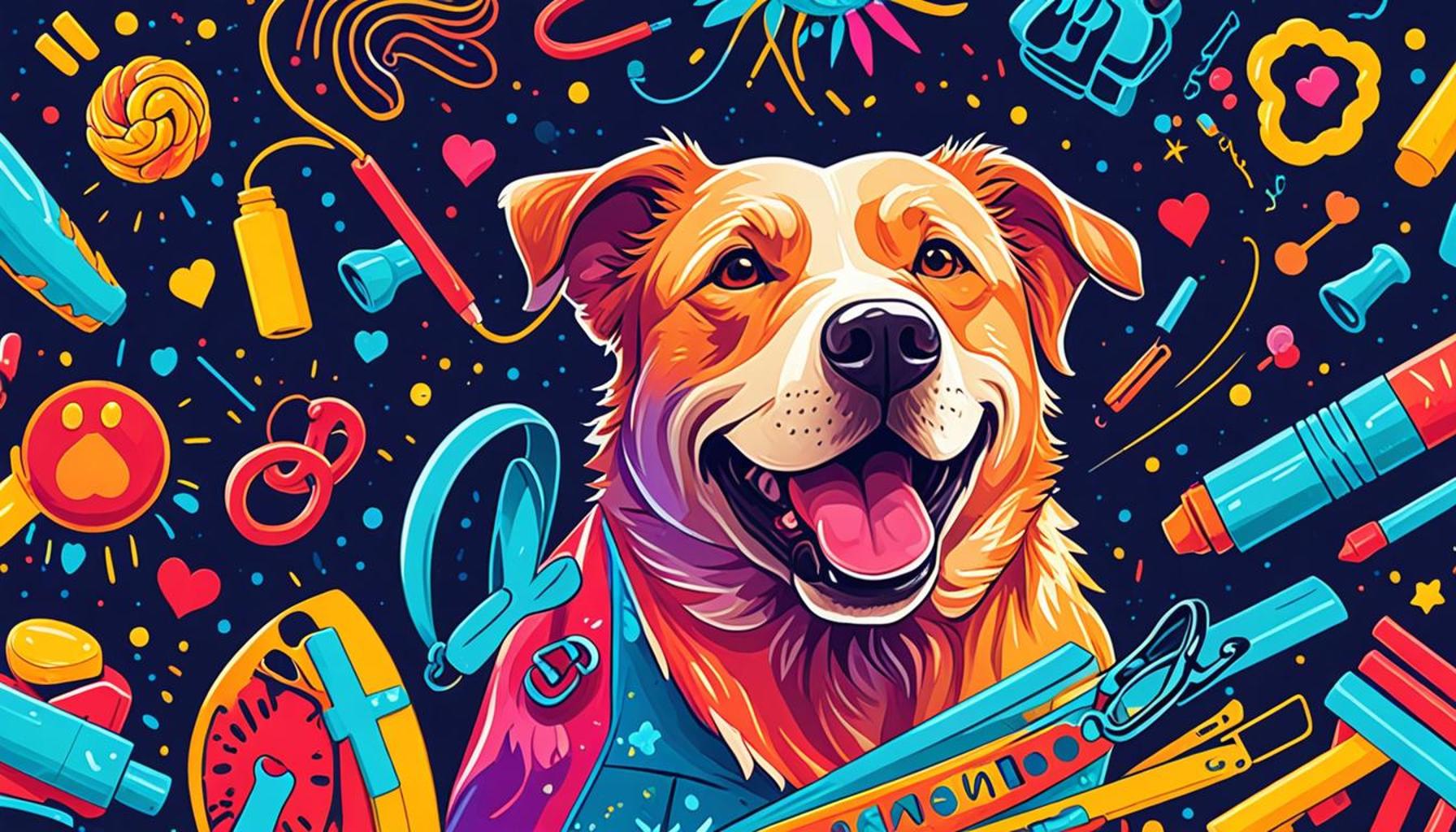Harnessing Technology: The Future of Remote Training Techniques for Pets

Shifting Paradigms in Pet Training
The landscape of pet training is undergoing a seismic shift. With the advent of advanced technology, pet owners now have access to innovative training solutions that can enhance the bonding experience between them and their furry friends. This evolution reflects a broader trend in society toward integrating technology into everyday activities, making pet training a more accessible and enjoyable venture for everyone involved.
Consider these exciting advancements in remote training techniques:
- Virtual Training Sessions: Live video consultations with professional trainers are making it easier to train pets from the comfort of home. Platforms such as Zoom or Skype allow trainers to observe a pet’s behavior in real-time, providing immediate feedback and personalized strategies. This method is particularly beneficial for owners in rural areas who may have limited access to qualified trainers.
- Training Apps: Gamified applications offer interactive training programs, providing a fun way to teach commands and behaviors. Apps like Puppr and Dogo feature step-by-step tutorials, rewards systems, and community forums, transforming the training experience into a game. This approach not only engages pets through rewards but also motivates owners by making training a shared activity.
- Smart Collars: These devices monitor a pet’s behavior, helping owners understand their training needs better. Equipped with GPS, activity tracking, and even health monitoring functionalities, smart collars like FitBark and Whistle can provide insights into a pet’s behavior trends and suggest areas for improvement.
As technology continues to evolve, the future of remote training techniques for pets promises to be more effective and engaging. By leveraging these tools, pet owners can:
- Reduce Travel Time: No need to drive to training classes, which saves owners both time and money while also reducing the stress that travel can impose on pets.
- Access Expert Guidance: Top trainers are now within reach, regardless of location, allowing owners in smaller towns to learn from the best without geographical limitations.
- Track Progress: With integrated analytics, owners can see real-time improvements. Many apps and smart devices offer performance metrics that help owners make informed decisions about their training approach.
Exploring these cutting-edge methods could redefine how we approach pet training in the United States. As the pandemic has shifted many individuals to an online-first mindset, remote training options have gained popularity, proving that effective training does not require physical proximity. The ability to adapt to these new techniques is crucial in ensuring our pets not only learn commands but also nurture a lasting bond with their humans.
In summary, technology is playing a pivotal role in transforming traditional pet training methods. Whether through virtual consultations, interactive applications, or innovative wearables, these tools offer exciting opportunities for pet owners to enhance communication and behavioral understanding with their pets. As we move forward, these advancements signal a significant change in the pet care landscape, fostering a deeper connection built on trust, understanding, and fun.
LEARN MORE: Click here to discover the importance of balanced nutrition for your pet’s health
Innovative Tools Reshaping Pet Training
In the digital age, pet training is evolving at an unprecedented pace, driven largely by the introduction of innovative technology that bridges the gap between trainers and pet owners. This shift aims to not only facilitate more effective training but also enrich the relationship between pets and their humans. As technology becomes more integrated into our everyday lives, pet owners are presented with a range of exciting tools designed to enhance the training experience. Let’s delve into some of the most promising advancements in remote training techniques for pets.
The Rise of Interactive Training Tools
Interactive training applications have taken center stage in the pet training arena. Apps that gamify training allow owners to teach their pets essential commands through fun, engaging exercises. With platforms such as Puppr and Dogo, users can follow step-by-step tutorials that break down complex behaviors into manageable tasks. Not only do these apps make the training process enjoyable, but they also incorporate reward systems that can motivate both pets and their owners.
- Progress Tracking: Many training apps feature performance metrics that allow owners to monitor their pet’s development over time. This data-driven approach ensures that adjustments can be made to training routines as needed, maximizing effectiveness.
- Community Engagement: Social features in these apps connect pet owners to a vibrant community. Users can share success stories, seek advice, and inspire one another to tackle challenges together.
- Real-Time Feedback: Leveraging video capabilities, some apps enable users to receive immediate feedback from trainers, allowing for quick adjustments and personalized advice while learning.
Smart Wearable Technologies
The advent of smart collars and wearables represents an exciting frontier in pet training. Equipped with features such as GPS tracking, activity levels, and behavior monitoring, devices like FitBark and Whistle provide insights into a pet’s daily habits. This information can help owners understand how their pets react to training sessions and identify specific areas where additional focus is needed. For instance, if a wearables’ data indicates that a dog becomes anxious when left alone, trainers can tailor a desensitization program based on those observations.
These smart technologies not only facilitate training but can also enhance overall pet care. Tracking a pet’s health metrics enables proactive decision-making regarding fitness and wellness, another crucial aspect of responsible pet ownership.
Benefits of Technology in Pet Training
Harnessing technology in pet training offers numerous benefits that extend far beyond convenience:
- Improved Accessibility: With virtual training sessions, pet owners can connect with expert trainers (regardless of location), ensuring quality training is just a click away.
- Customization of Training Plans: Advanced analytics empower owners to create personalized training regimens based on real data about their pets, leading to more effective learning experiences.
- Stress Reduction: Training in familiar environments, paired with the ease of technology, minimizes anxiety for pets, allowing them to learn in comfort.
As we continue to explore the impactful role technology plays in remote training techniques, it becomes evident that the future holds exciting possibilities for pet owners eager to foster meaningful relationships with their companions. This technological shift not only transforms the training landscape but also enhances our understanding of animal behavior, paving the way for a brighter future with our pets.
| Advantages | Description |
|---|---|
| Improved Accessibility | Remote training allows pet owners to access expert training resources from anywhere, eliminating geographical barriers. |
| Personalized Learning | Technology enables tailored training experiences tailored to each pet’s unique personality and learning pace. |
| Cost-Effective | Virtual sessions often reduce costs associated with travel and facility use, making training more affordable for pet owners. |
| Engagement | Interactive tools and digital platforms keep pets engaged, enhancing retention and response to training commands. |
The integration of technology in remote training opens new avenues for pet owners far and wide. For instance, training apps and videos provide an engaging medium for both pets and their owners, ensuring that crucial learning can occur in the comfort of their homes. Additionally, through features like real-time video consultations, pet owners can receive immediate feedback from trainers, improving the effectiveness of the training sessions. With the rise of data analytics, trainers can monitor a pet’s performance over time, leading to enhanced strategies that fire up motivation for both owners and their pets. By harnessing technology, we delve deeper into understanding animal behavior while empowering owners with the skills they need to create lasting bonds with their pets. This tech-driven approach not only simplifies the training process but also fosters a stronger connection between pets and owners, underscoring the potential of remote training techniques in improving pet behavior and well-being.
DISCOVER MORE: Click here to learn how to enrich your pet’s environment
Transforming Training Through Virtual Reality and Augmented Reality
As technology continues to advance, Virtual Reality (VR) and Augmented Reality (AR) are making waves in the pet training landscape. With the ability to simulate real-world environments, VR headsets provide an immersive training experience that benefits both dogs and their owners. By utilizing VR, pet owners can practice command execution in various settings—from bustling parks to quiet homes—without ever leaving their living rooms. This not only helps dogs adapt to different surroundings but also curtails behavioral issues caused by anxiety or unpredictability.
Meanwhile, AR applications allow trainers to overlay digital information onto the real world, helping pet owners visualize effective training methods. For instance, an AR app could demonstrate the correct posture owners should adopt while training their pets or illustrate the desired outcome of a specific command. This hands-on visualization can significantly enhance comprehension, making remote training sessions feel more interactive and engaging.
Automated Training Devices
The rise of automated training gadgets is further testament to technology’s transformative power in remote pet training. Devices like the Petzi Treat Cam and Feeder Robotics combine treat dispensing with video capabilities, allowing owners to reward their pets for good behavior from afar. These tools go a step beyond traditional remote training, enabling owners to reinforce positive behavior in real-time even when they are not physically present.
Moreover, these automated devices can facilitate consistency in training, a vital component for positive reinforcement. By ensuring pets receive timely rewards, owners can help their pets to draw a direct correlation between desired behaviors and the received treats, further accelerating the learning process.
Leveraging AI for Enhanced Training Outcomes
Artificial Intelligence (AI) is opening up a world of possibilities in the realm of pet training. Through machine-learning algorithms, AI-enabled training tools can analyze a pet’s responses and behaviors to suggest tailored training methods. For example, platforms that incorporate AI functionality can evaluate a dog’s learning rate and recommend alternative strategies if a particular method isn’t yielding results. This individualized approach is beneficial for pets with unique behavioral challenges, allowing trainers to be more effective in their methods.
- Adaptive Learning: AI tools can learn from the success or failure of past training sessions, continually refining their recommendations and adapting to a pet’s evolving behavior.
- Behavior Monitoring: By analyzing data gathered from various sessions, AI can help predict potential behavioral issues before they become problematic, allowing for proactive intervention.
- Interactive Feedback: Some AI training applications can provide voice-activated responses or suggestions, creating an ongoing dialogue that mimics live interactions with trainers.
The integration of AI into remote pet training heralds a new era of personalized learning, ensuring that no two training programs are exactly alike. With the capability to assess and adapt almost instantaneously, owners are empowered to provide their pets with the most effective teaching methods tailored to their specific needs.
As we continue to witness the integration of these advanced technologies in pet training, it becomes increasingly clear that the future lies in a blend of tradition and innovation. From VR and AR to smart devices and AI, pet training is not just evolving; it is reinvigorating the bond between pets and their owners through an enriching, data-driven approach.
DISCOVER MORE: Click here to learn how cat personalities affect adoption choices
Conclusion: The New Era of Pet Training
The realm of pet training is undergoing a seismic shift as we embrace the potential of technology to enhance our interactions with our furry companions. As discussed, tools such as Virtual Reality (VR), Augmented Reality (AR), automated gadgets, and Artificial Intelligence (AI) are setting a new standard for remote training techniques. These innovations are not just about convenience; they fundamentally alter how pet owners can engage with their animals, providing deeper understanding and more effective strategies tailored to individual needs.
The capacity of VR and AR to simulate diverse environments means owners can prepare their pets for real-world challenges without the stress of unpredictability. Meanwhile, automated devices support trainers’ efforts by empowering them to reward desirable behaviors from afar, thereby maintaining consistency, which is critical for effective training. Additionally, AI-infused tools personalize training programs, constantly adapting to each pet’s progress and setbacks, ensuring that pet training is as dynamic and individualized as the animals themselves.
Looking forward, the convergence of these technologies promises not only to enhance training outcomes but also to fortify the emotional bond between pets and their humans. As owners harness these tools, they are positioned to foster understanding, empathy, and a shared journey of learning. With continued investment in technology and innovation, the future of pet training is poised to be not only smarter but also more compassionate, creating an enriching experience for pets and their families alike. As we step into this new frontier, we encourage pet owners to explore these technologies and embrace the opportunities they present for nurturing well-trained, happy, and healthy pets.


